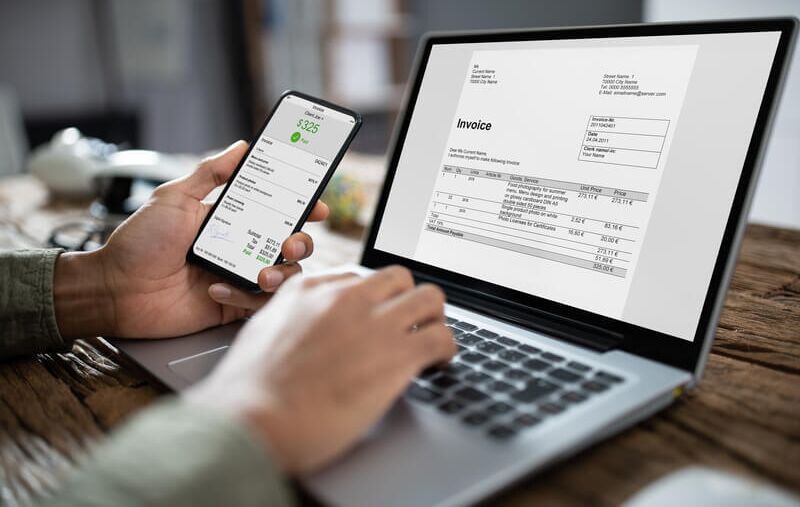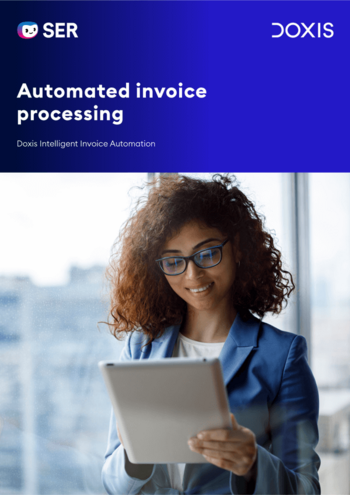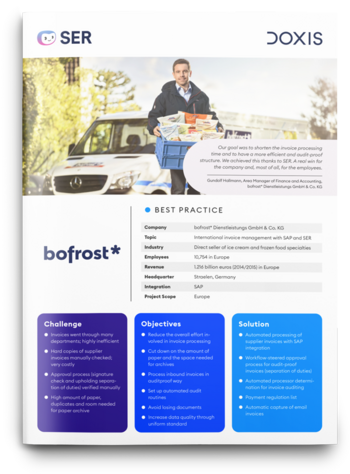SER Blog Information Governance
Navigating EN 16931: The EU standard for eInvoicing
There is a strong chance your enterprise is preparing for the upcoming mandatory eInvoicing requirement penned EN 16931, which defines the key elements of an electronic invoice (eInvoice). It’s already mandatory in Germany for the exchange of invoices with public sector authorities, with requirement for mandatory B2B invoicing to take effect in 2025.
So consider this your guide to navigating EN 16931, and learn what role it plays in mandatory eInvoicing, the requirements it places on eInvoices and how the right software can help you ensure that you are receiving eInvoices in compliance with the law.

What is the EN 16931?
EN 16931 is the European standard that establishes a clear and consistent format for electronic invoices. By standardizing the specifications for eInvoices, it ensures that companies can easily align their invoicing practices with these EU requirements. This move is designed to make the invoicing process more efficient and straightforward for everyone involved.
Historical development at the EU level
EN 16931 is the standard related to EU Directive 2014/55/EU. It was developed by the European Committee for Standardization (CEN), and originally came out of the European standard for electronic invoices (ESI). The European Commission ordered EN 16931 in the context of the EU Directive 2014/55/EU, which was published back in 2014. It defines requirements for implementing eInvoicing for public sector authorities in all member states at EU level.
It was first introduced in 2017.
Translation to national law
With the eInvoicing Act and the eInvoicing Ordinance, the German federal government translated EU Directive 2014/55/EU into national law. At the federal level, EN 16931 contributes to the Growth Opportunities Act, which aims to promote local economic growth and increase national competitiveness.
Since November 27 2018, federal constitutional bodies and the highest federal authorities have been required to be able to receive and process eInvoices. The entire B2G sector is now required to conduct electronic invoice processing in line with the legal standard.
Objectives
The EN 16931 standard is paving the way for harmonized invoicing processes throughout the European Union. This means that all member states will need to adhere to the EU's requirements, which include a standardized format along with specific implementation guidelines. Ultimately, this EU standard streamlines cross-border retail operations in both the B2G and B2B sectors, making transactions smoother and more efficient.
eInvoicing simplifies invoice processing by allowing for automation, which means no more waiting around for manual data entry or dealing with hiccups from switching formats or systems. This standardization is crucial for bringing consistency to invoicing practices across the European market. So, eInvoices that meet the EU standard EN 16931 will easily connect with other systems in the EU, making life a lot easier for everyone involved.
As a result, commercially available accounting and ERP systems will,in the future, support the electronic invoice format. This will streamline your billing processes and make them more secure.

Doxis Intelligent Invoice Automation
Learn how to automate inbound invoice workflows, expedite invoice processing and save costs — with Doxis Intelligent Invoice Automation.
Read nowWhat requirements does the EU standard set for eInvoicing?
EN 16931 lays out a clear data model for the essential parts of an eInvoice, while also providing a list of acceptable syntaxes. This means it sets the groundwork for how eInvoices should be structured and specifies the different formats that can be used.
This results in the following requirements:
- An eInvoice must correspond to a semantic data model in accordance with the EU standard.
- Organizations subject to eInvoicing “must be able to accept and process all syntaxes,” according to the BMI.
The semantic data models are necessary to exchange and process eInvoices independently of the software. These are the components:
- Core invoice model: describes the basic information that every eInvoice must contain, such as invoice number, invoice date and tax information.
- Syntax bindings: describe the representation of the core model in different eInvoice formats, for example, UBL, UN/CEFACT or other formats, such as XRechnung and ZUGFeRD.
Components of the EU standard
The components of the EU standard EN 16931 are divided into three levels of conformity:
Invoice document
The invoice document must contain all the information required to be EN 16931 compliant. It’s not enough to simply provide the correct information. You must provide it in the correct structure and format.
Also, the invoice document must not contain any inadmissible values.
CORE invoice data model
According to the EU Commission, an invoice standard is compliant if an eInvoice is based on the CORE invoice data model, which is part of the broader EN 16931 standard for European invoicing. This model provides a framework to define invoice requirements without being tied to any specific syntax. Recipients must be able to accept and process eInvoices that follow the CORE data model, while senders are required to create electronic invoices using this model as their foundation.
CIUS specifications
Alternatively, an invoice document can be based on the CIUS specifications. CIUS stands for ‘core invoice usage specifications’ and extends the core data model for invoices. This is important in order to supplement the core elements of an electronic invoice at country level with nationally applicable legal information. The requirements for recipients and senders apply similarly to the CORE invoice.
What’s more, CIUS follows the rules of CORE. Anyone who receives and processes CORE invoices can generally process eInvoices in accordance with CIUS.
Implementing EN 16931 in company-wide accounting processes
Starting January 1, 2025, German B2B companies will need to be equipped to receive eInvoices for domestic taxable sales. There will be transitional periods for mandatory eInvoicing, gradually increasing until 2028. To stay ahead of the curve, it’s a good idea for your company to begin processing eInvoices in line with the EN 16931 sooner rather than later. Probably not a good idea to leave it until December 30th..
Supported invoice formats
Valid European eInvoice formats are those that meet the requirements of the EU standard EN 16931. In Germany, eInvoice formats must also comply with the Federal E-Invoice Ordinance (ERechV). Two compliant formats are ZUGFeRD and XRechnung.
- ZUGFeRD: As a hybrid model, ZUGFeRD enables electronic and non-electronic invoice processing in parallel. A PDF forms the visual component when sending an eInvoice, and the identical document is available in machine-readable XML format.
- XRechnung: In accordance with Section 4 Para. 1 of the ERechV, XRechnung is an open, free and future-proof data standard for public sector authorities. It is a machine-readable invoice format based on XML.
Common billing portals such as Peppol already support invoice formats such as XRechnung. Additional accounting and ERP systems are now switching to eInvoice formats. You can also receive and process electronic inbound invoices in Doxis in compliance with EN 16931.

bofrost*: Automated inbound invoice processing with ECM & SAP
Read all about how bofrost* automates its invoice processing with Doxis, saving time and money along the way
Read nowEN 16931-compliant inbound invoice processing with Doxis
How digital invoice processing with Doxis works:
Step 1: Classify inbound mail and extract data
The data in the eInvoice is easy for machines to read right from the start. Doxis, our document management system (DMS), takes care of classifying the documents with the help of powerful AI technology. The AI program, Doxi, looks for keywords to figure out what type of document it is. By checking details like the invoice number, date, items or payment info, Doxi can tell that the incoming mail is an invoice.
Doxi extracts these keywords (invoice number, invoice date, etc.) in parallel to the classification and stores them in a structured manner.
Step 2: Start workflow
If all the information is correct, the system stores the invoice in the associated eFile. The system then launches a workflow to notify the responsible processor that the invoice is ready for review. If the person is absent due to vacation or illness, the system applies the delegation and deputy rules. T The processor can find the invoice when they look in the invoice ledger.This is followed by the usual invoice workflow, consisting of invoice validation and release, i.e. payment.
Step 3: Complete the invoice workflow and archive the eInvoice in an audit-proof manner
Once the invoice is paid, the document becomes inactive. You can then archive the eInvoice in Doxis in an audit-proof manner. It stores your invoices for the 10-year retention period in accordance with the law and the GDPR.
Using authorization concepts, you keep control of who can and cannot view the invoices. Fast access is guaranteed for the query.
Summary: Role of EN 16931 in mandatory eInvoicing
With Doxis, you can handle eInvoices that meet the EN 16931 standard, taking them through the entire process until they're archived. This streamlined inbound invoice processing not only enhances your workflow but also supports collaboration across the EU. It’s crucial to adapt now, as only EN 16931-compliant eInvoices will be accepted soon. Plus, in Germany, companies need to select an invoice format that aligns with the Federal E-Invoicing Ordinance (ERechV).
Invoice portals and ERP systems in use tend to support the EN 16931-compliant formats ZUGFeRD and XRechnung. This will enable you to create outgoing invoices that comply with the law in the future. Inbound and outbound invoice processing interact with each other when you connect Doxis to your ERP system. Then you can manage eInvoices in accordance with the EN 16931 standard and without any media disruptions – both as recipient and sender.
Want to see how Doxis handles inbound eInvoices in action? Get in touch! Our experts are happy to help.
FAQs about EN 16931
The latest digitization trends, laws and guidelines, and helpful tips straight to your inbox: Subscribe to our newsletter.
How can we help you?
+49 (0) 30 498582-0Your message has reached us!
We appreciate your interest and will get back to you shortly.




